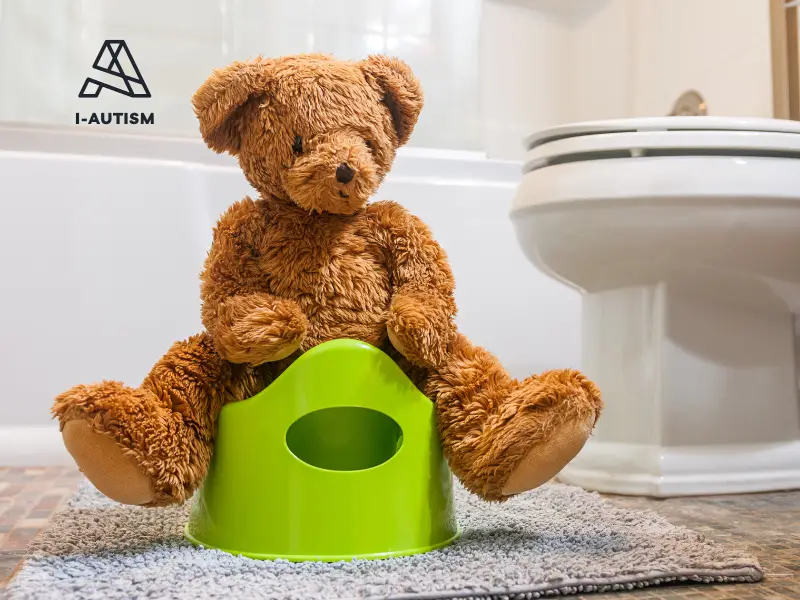Potty training is a significant milestone in a child’s development, but for children with autism, it can present unique challenges. Autism Spectrum Disorder (ASD) often affects communication, sensory processing, and behavior, which can make the potty training process more complex. However, with patience, understanding, and the right strategies, potty training can be a successful and positive experience for both the child and their caregivers.
This blog will explore the challenges of potty training children with autism, provide practical strategies for success, and offer tips for overcoming common obstacles.
Why Potty Training Can Be Challenging for Children with Autism
Children with autism may face specific challenges that make potty training more difficult than for neurotypical children. Understanding these challenges is the first step toward developing an effective potty training plan.
1. Communication Difficulties
- Many children with autism have limited verbal communication skills, making it difficult for them to express when they need to use the bathroom. They may also struggle to understand verbal instructions or explanations about the potty training process.
2. Sensory Sensitivities
- Sensory sensitivities can make the experience of using the toilet overwhelming. For example, the sound of flushing, the feel of the toilet seat, or the sensation of sitting on the potty may be uncomfortable or distressing. Some children may also have difficulty recognizing the physical sensations of needing to use the bathroom.
3. Resistance to Change
- Children with autism often thrive on routine and may resist changes to their daily schedule, including the introduction of potty training. They may also have difficulty transitioning from diapers to using the toilet.
4. Delayed Motor Skills
- Some children with autism may have delays in fine or gross motor skills, which can make tasks like pulling down pants or sitting on the potty more challenging.
When to Start Potty Training
Potty training is a significant milestone for any child, but for children with autism, it can come with unique challenges. There’s no universal age or timeline for when to start potty training, as every child develops at their own pace. However, there are key signs of readiness to look for in three main areas: physical, cognitive, and emotional readiness. Let’s break these down to help you determine if your child might be ready to begin this journey.
1. Physical Readiness
Physical readiness is one of the most important factors to consider before starting potty training. Here’s what to look for:
- Your child can stay dry for at least two hours at a time.
This indicates that their bladder muscles are developing the ability to hold urine, which is a key sign they may be ready to start using the toilet. - They show awareness of when they are urinating or having a bowel movement.
For example, your child might pause during play, hide, or make a face when they are going. This awareness is a crucial step toward understanding the connection between their body and the toilet.
If your child is showing these signs, it may be a good time to introduce the concept of using the potty.
2. Cognitive Readiness
Cognitive readiness involves your child’s ability to understand and follow the steps involved in potty training. Look for these signs:
- Your child can follow simple instructions, such as “sit down” or “come here.”
Being able to follow basic directions is essential for potty training, as it helps them understand what is expected of them. - They show an interest in the bathroom or imitating others using the toilet.
If your child is curious about the bathroom, wants to watch others use the toilet, or tries to imitate these actions, it’s a strong indicator that they’re cognitively ready to start learning.
Cognitive readiness ensures your child can grasp the process and participate actively in potty training.
3. Emotional Readiness
Emotional readiness is just as important as physical and cognitive readiness. Potty training can be a big change, and your child’s emotional state plays a key role in their success. Consider the following:
- Your child is not overly resistant to changes in routine.
Children with autism often thrive on routine, so introducing something new like potty training can be challenging. If your child is generally adaptable or shows minimal resistance to small changes, they may be emotionally ready. - They show a willingness to try new things, even if they are initially hesitant.
If your child is open to exploring new activities or experiences, even if they’re unsure at first, this is a positive sign. Potty training requires patience and a willingness to learn, so a curious and cooperative attitude can make the process smoother.
Potty training a child with autism requires careful observation of their physical, cognitive, and emotional readiness. By looking for these signs, you can determine the best time to start and set your child up for success. Remember, every child is different, and it’s okay to take things at their pace. Celebrate small victories along the way, and don’t hesitate to seek support from professionals or other parents who have been through the process.
Resources and Tools
Potty training can be a challenging process for children with autism due to difficulties with communication, sensory sensitivities, and the need for routine. However, with the right resources and tools, parents and caregivers can facilitate successful toilet training. Here are some key resources and tools to assist with potty training for children with autism:
1. Toilet Training Tool Kits
- Milestones Autism Resources: This tool kit provides step-by-step guidance for preparing and planning toilet training for a child with special needs. It includes tips for creating a supportive environment and strategies to encourage toileting success (Milestones Autism Resources).
- Autism Speaks ATN/AIR-P Toilet Training Guide: This guide offers practical tips and resources to help increase toileting success for children with autism. It includes strategies for addressing common challenges and creating a toileting routine (Autism Speaks).
2. Expert Tips and Strategies
- Seven Toilet Training Tips for Nonverbal Kids with Autism: This resource provides expert advice on toilet training nonverbal children with autism, including the use of visual supports, consistent routines, and positive reinforcement (Autism Speaks).
- Toilet Training for Autistic Children: This article discusses the use of rewards, video modeling, visual supports, and social stories to support toilet training for autistic children (Raising Children).
3. Comprehensive Guides
- Autism Speaks Toilet Training Toolkit: This comprehensive resource includes ideas to think about, where to start, tips to increase toileting success, an example toileting plan, and a visual schedule (PAAutism.org).
- Potty Training for Autism – The Ultimate Guide: This guide provides step-by-step strategies and tips for potty training children with autism, addressing common challenges and offering practical solutions (Autism Parenting Magazine).
4. Visual Supports
- Picture Schedules: Visual schedules can help children understand and follow the steps involved in going to the toilet. They provide a clear and consistent visual representation of the toileting routine (Yellow Bus ABA).
- Social Stories: Social stories are short, personalized narratives that explain social situations and expected behaviors. They can be used to explain the toileting process in a way that is understandable and relatable for the child.
5. Rewards and Reinforcement
- Reward Systems: Using a reward system, such as a sticker chart or small incentives, can motivate children to use the toilet. Positive reinforcement helps encourage desired behaviors and build confidence.
- Praise and Encouragement: Consistent praise and encouragement for successful toileting attempts can boost the child’s confidence and reinforce positive behaviors.
6. Sensory Considerations
- Sensory-Friendly Toilets: Ensuring that the bathroom environment is comfortable and sensory-friendly can help reduce anxiety and sensory overload. This may include using soft lighting, minimizing noise, and providing sensory tools such as fidget toys.
- Adaptive Equipment: Tools like potty seats, step stools, and toilet training pants can make the toileting process more accessible and comfortable for the child.
7. Consistent Routines
- Regular Toileting Schedule: Establishing a consistent toileting schedule helps create predictability and routine, which can be comforting for children with autism.
- Clear Communication: Using clear and simple language to communicate about toileting can help the child understand what is expected and reduce confusion.
Strategies for Successful Potty Training
Potty training a child with autism requires a tailored approach that takes into account their unique needs and challenges. Here are some strategies to help make the process smoother and more successful:
1. Create a Visual Schedule
- Use a visual schedule to help your child understand the steps involved in using the toilet. For example, you can use pictures or icons to represent each step, such as pulling down pants, sitting on the potty, and washing hands.
- Review the schedule with your child regularly to reinforce the routine.
2. Use Social Stories
- Social stories are short, descriptive narratives that explain social situations and expectations. Create a social story about using the potty to help your child understand what to expect and why it’s important.
- For example, the story might include sentences like, “When I need to go potty, I sit on the toilet. This helps me stay clean and dry.”
3. Address Sensory Sensitivities
- Make the bathroom environment as comfortable as possible for your child. For example, you can use a soft toilet seat cover, provide a step stool for their feet, or play calming music to mask the sound of flushing.
- If your child is sensitive to certain textures, consider using training pants or underwear made from soft, comfortable materials.
4. Use Positive Reinforcement
- Reward your child for successful attempts at using the potty. This can include verbal praise, stickers, or small treats.
- Be consistent with rewards and celebrate even small successes, such as sitting on the potty for a few seconds.
5. Practice Patience and Consistency
- Potty training can take longer for children with autism, so it’s important to be patient and consistent. Stick to the routine and avoid giving up if progress is slow.
- If your child has an accident, remain calm and avoid punishment. Instead, gently remind them of the steps involved in using the potty.
Overcoming Common Challenges
Potty training a child with autism may come with its share of challenges. Here are some tips for overcoming common obstacles:
1. Resistance to Sitting on the Potty
- If your child is resistant to sitting on the potty, start by having them sit fully clothed for short periods. Gradually increase the time and introduce sitting without clothes. Use a timer to help your child understand how long they need to sit.
2. Difficulty Recognizing the Need to Go
- Help your child recognize the physical sensations of needing to use the bathroom by pointing out when they are urinating or having a bowel movement. Use consistent language, such as “It’s time to go potty,” to help them make the connection.
3. Fear of the Toilet
- If your child is afraid of the toilet, consider using a small potty chair instead. Gradually transition to the toilet as they become more comfortable. Allow your child to explore the bathroom and toilet at their own pace, without pressure.
4. Accidents
- Accidents are a normal part of the potty training process. When they happen, clean up calmly and avoid making a big deal out of it. Use accidents as teaching moments by reviewing the steps involved in using the potty.
Tips for Parents and Caregivers
Potty training a child with autism can be a challenging and emotional process for parents and caregivers. Here are some tips to help you stay positive and focused:
1. Set Realistic Expectations
- Understand that potty training may take longer for your child than for neurotypical children. Celebrate small successes and be patient with setbacks.
2. Seek Support
- Connect with other parents of children with autism who have gone through the potty training process. They can offer valuable advice and encouragement. Consider working with a therapist or behavior specialist who has experience with autism and potty training.
3. Take Care of Yourself
- Potty training can be stressful, so make sure to take care of your own mental and emotional well-being. Take breaks when needed and practice self-care.
Potty training a child with autism may require extra time, patience, and creativity, but with the right strategies and support, it can be a successful and rewarding experience. By understanding your child’s unique needs, addressing sensory sensitivities, and using positive reinforcement, you can help them achieve this important milestone.
Remember, every child is different, and progress may come in small steps. Celebrate each success along the way, and don’t hesitate to seek help if you need it. Together, you and your child can navigate the potty training journey with confidence and positivity.



